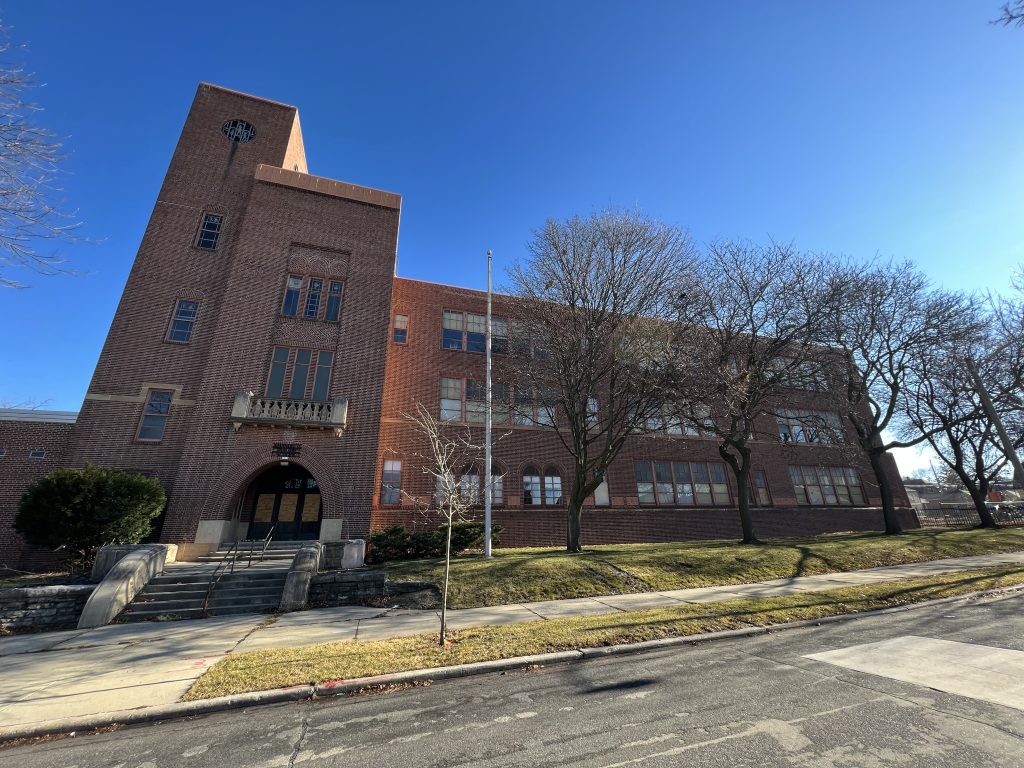Is Building Surplus a Factor in MPS Referendum?
Critics charge it is. But how much money could be saved by closing more buildings?
As the Milwaukee Public Schools (MPS) seeks approval for a $252 million referendum in April, critics are asking why MPS doesn’t shed underutilized buildings. Colleston Morgan, executive director of the City Forward Collective, argued this point to TV58. So has the Metropolitan Milwaukee Association of Commerce at its website. The Badger Institute even found Bill Andrekopoulos, who left MPS as superintendent 2010, to raise this question.
Certainly MPS may have a surplus of buildings. In 2023, the district reported to the state Legislature’s Joint Finance Committee that 36 schools are at 70% or less in filling their buildings to student capacity.
MPS superintendent Keith Posley has talked about “right sizing” the districts, but any plan is months away. “It looks like they are waiting on how everything turns out in April,” says school board director Henry Leonard.
At an October 24 Milwaukee School Board meeting, the administration stated that a new analysis of school buildings would be shared in November. The administration met with board members individually, but no report was made available publicly.
Previously, at an October 19 committee meeting of the board, a motion was sponsored by Leonard on behalf of board member Megan O’Halloran to require the administration to provide a report and recommendations for the use of the long-term capital improvement trust no later than February.
But this more about the declining state of the district’s buildings. “We have millions of dollars of deferred maintenance,” said O’Halloran. “We are educating 21st century children in 19th century buildings.”
The motion required that the administration consult with the Office of Board Governance and the Office of Accountability and Efficiency (OAE). Neither office states that they were consulted. No full report was provided for the February 22 committee meeting, only a “10 year projection” of future maintenance costs with most categories blank.
While the district does have at least $7 million set aside for deferred maintenance, that amount would not cover all the needs of this district. Specific information on which buildings will get maintenance funding and the conditions of individual buildings might be a good window into which buildings are on the chopping block.
At the February 28 full board meeting, O’Halloran stated, “It would be nice to have a list, at some point, that these are the projects that got funded.”
But Posley said, “We don’t want to put dollars into a building that we might decide to do something else with.” He didn’t say what might happen to some school buildings.
Leonard thinks the administration has the wrong approach. “We should be open and honest about what will happen if we don’t get the referendum passed… The referendum would more likely pass it we were already making some cuts and telling the public that more cuts were on the way.”
The conservative, Wisconsin Institute for Law & Liberty (WILL), has long held that the school district and the city have used every tool to sabotage any attempt to sell vacant MPS buildings to private schools. State law requires that empty Milwaukee school buildings must be made available for sale to private schools for two years. After that, the city can sell the buildings to other interested parties. WILL contends that the city has required zoning changes and mandatory upgrades adding millions of dollars to convert an MPS school into a private one.
Back in 2018 WILL charged that a private school tried to buy the Wheatley elementary, vacant since 2011. “Wheatley is still empty and for sale today.” However, in 2019, the building was sold to a developer who has converted it into 82 affordable rental units, as Urban Milwaukee reported.
Philipp elementary was listed as a potential private school site, but the criteria for purchase required “improvements” to the building. After two years and no private school takers, Philipp became available for commercial redevelopment.
For the city the conversion to affordable housing does two things: alleviating the housing shortage and placing previously property tax exempt buildings back on the city’s tax rolls.
The city currently lists no available school buildings for private schools use only at this time. Some private school proponents have turned to building shiny, new facilities such as St. Augustine and Cristo Rey rather seeking out century-old buildings requiring extensive renovation.
However old MPS buildings are sold, the result may not save the district much money and can create other problems. As a January 24 Education Week article noted, “Districts often hire consultants to help sort through closure options or game out new transportation scenarios. Even the act of closing a physical building – boarding up doors and windows, erecting protective fencing, maintaining and marketing the building for a possible sale – costs money.”
The oldest MPS buildings are often in the inner city. Closing these outdated buildings could create “educational deserts” unless some newer buildings are constructed in their place. If MPS would build just one new school building each year, it would take 150 years to replace all its buildings.
Consolidation of buildings may improve teacher utilization, but may also result in larger class sizes. And such consolidation would be difficult to take place by next year.
Leonard believes some money could be saved by closing some buildings. “We could save $1.5 million per building,” he estimates, “but we are not going close to $210 million in [savings].”
Meanwhile principals are scared of what will happen if the referendum doesn’t pass. They were told to prepare two possible budgets: one with and one without the passing of the referendum, and share those budgets with their teachers. Without the referendum, staffing would be slashed, and teachers would be reassigned. Panicked teachers contacted school board members and the union with phone calls and emails. One principal who oversees two buildings stated that she would retire if she lost her assistant principal and had to handle both buildings on her own.
Voters will decide on the referendum on the April 2 ballot.
If you think stories like this are important, become a member of Urban Milwaukee and help support real, independent journalism. Plus you get some cool added benefits.
More about the 2024 MPS Referendum
- After MPS Issue, GOP Lawmakers Would Require Financial Reporting Before Referendums - Baylor Spears - Oct 5th, 2025
- K-12 Education: MPS Plans $60 Million In Budget Cuts - Terry Falk - Apr 22nd, 2024
- Following Referendum, MPS Cuts Trauma Specialists in 53206 ZIP Code - Corrinne Hess - Apr 17th, 2024
- MMAC statement on MPS referendum - Metropolitan Milwaukee Association of Commerce - Apr 3rd, 2024
- City Forward Collective Responds To The Outcome of the MPS Referendum - City Forward Collective - Apr 3rd, 2024
- MTEA President Ingrid Walker Henry: Statement on Passage of MPS Referendum - Milwaukee Teachers’ Education Association - Apr 2nd, 2024
- Statement from GMC on April 2nd MPS referendum - Greater Milwaukee Committee - Mar 26th, 2024
- MPS Referendum Would Reverse Effects of Declining State Funding - Graham Kilmer - Mar 12th, 2024
- K-12 Education: Is Building Surplus a Factor in MPS Referendum? - Terry Falk - Mar 11th, 2024
- Campaign Targets MPS Funding Referendum - Graham Kilmer - Feb 24th, 2024
Read more about 2024 MPS Referendum here
K-12 Education
-
MPS Training in Science of Reading Going Poorly
 Nov 23rd, 2025 by Terry Falk
Nov 23rd, 2025 by Terry Falk
-
The Fear Factor at MPS
 Nov 11th, 2025 by Terry Falk
Nov 11th, 2025 by Terry Falk
-
MPS Reaching Out to Community
 Nov 2nd, 2025 by Terry Falk
Nov 2nd, 2025 by Terry Falk





















Closing schools does nothing to help those that currently attend them. Especially if schools get consolidated and folks have to travel / commute even further to class. None of that helps with student performance / tardiness / etc either.
Of course, all of this helps GOP and their mission of destroying public school and funneling the few remaining properties to Private Schools and other things that aren’t schools at all.
MPS needs to take full notice of dropping enrollment due to dropping student population due to dropping replacement rate, have a 10-20-30-40-50 year plan for their existing building stock, all of their maintenance, and what will actually remain. All of it needs improvement, but please figure it all out and prioritize it. Shouldn’t have to be this amorphous thing.
Heck, paint two pictures, one with and without extra funding – show just how dire it will be.
MPS should sell all of its excess buildings before even thinking about coming to the public for a referendum. Show some good faith that you are addressing the problem yourself. Consolidating a few schools after that might be helpful as well. MPS is not exactly a pillar of success academically. Until you take care of that, don’t expect people to pay more in taxes to maintain your status quo.
BTW Colin–charter schools are public schools and performance is much better. Don’t tell me it is because they send struggling students elsewhere, I/we know better. There are many exceptional needs students–and all low-income.
I’ve worked with charter schools since they began. Thank God students have more options.
There is a great deal of variability in achievement within charter schools and claims that these schools have better outcomes are weak. I have worked in three charter schools. Of the three, only one stands out in terms of achievement, programs, and parental involvement. The other two had issues with poor leadership, bad decision making, wasting resources, and low levels of parental involvement. Plus these two schools found ways to purge the school body of students with high educational needs.
Yes, I agree that there is variability in performance among charter schools as with all schools. I’ve worked with about 8 charter schools and all had significant numbers of exceptional needs students due to the ability of the staff to serve them. I’ve never experienced a charter school that ‘purged’ special needs students. You probably know that MPS gets more money for exceptional needs students–while charter schools do not–yet they still serve them equally. I think some of the negative experiences you describe fit pretty well with MPS schools. That is exactly why they are not doing well. I haven’t found parental involvement to make a difference as schools serving low-income families have parents that don’t have the time to be further engaged just struggling to stay afloat. Quality teachers make the most difference.